PLANTS IN THE PLACE THAT WAS BURNING LAST SUMMER
A little more than a month ago, on the 17th of February, I revisited a roadside area about 30 - 35 kilometers north of my hometown, near the small village of Shtokovtzi, and only a couple of kilometers from the small town called Svetvinchenat. A wildfire caught that place on the 19th of August 2022.
In today's post, I'll show you some plants and the scenery, photographed half a year after the fire. As you can see in this opening photograph, the barren burned trees have been cut down, cut in pieces, and turned into piles that give an interesting look to the landscape.
Fresh new foliage is constantly coming out near the dark carbonized wood, even in winter. Here you can see the young shoots of Quercus robur, the pedunculate oak peeking from under the dead trunk of the same kind of tree.
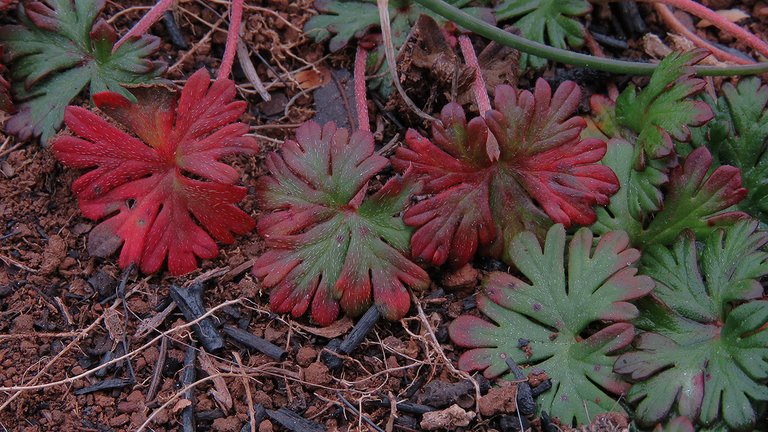
When the low-growing herbaceous plants complete the reclaiming of these burned places, they form a more or less continuous lawn, on which is practically impossible to get a good portrait of a single plant because various leaves are mixed in an intricate pattern. That hasn't happened yet here ...
... so I had a great opportunity to photograph some beautiful circular arrangements, clearly distinguishable on the barren ground.
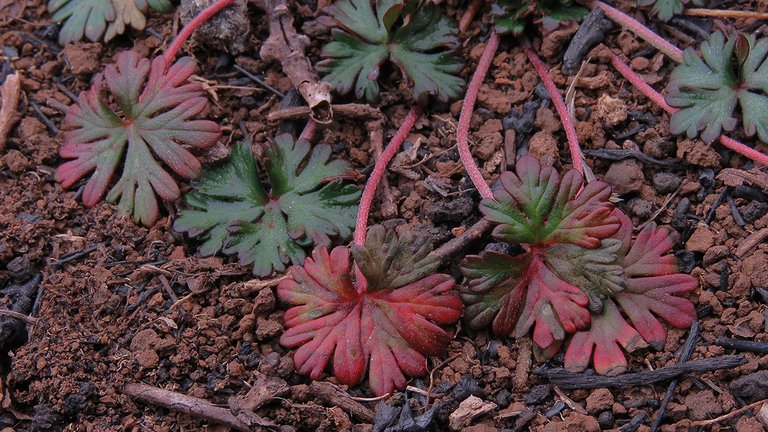
Here, and in the previous two photographs, you can see the leaves of the Geranium columbinum plant. Some leaves of some herbaceous plants turn completely or partially red in winter due to the frost and stressfully low morning temperatures, often followed by a sudden midday warmth.
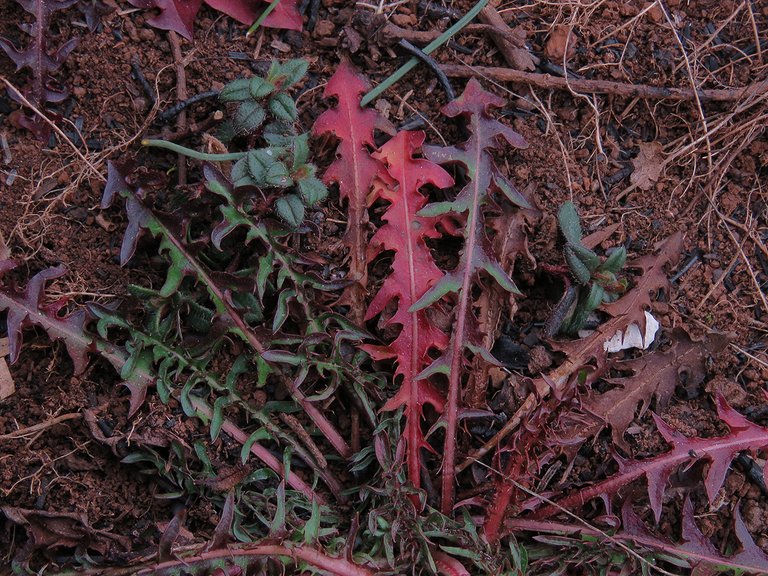
Here you can see the red, green, and violet leaves of the Taraxacum multidentatum dandelion. In the following photograph ...
... you can see a lovely yellow flower of the plant surrounded by those colorful leaves.
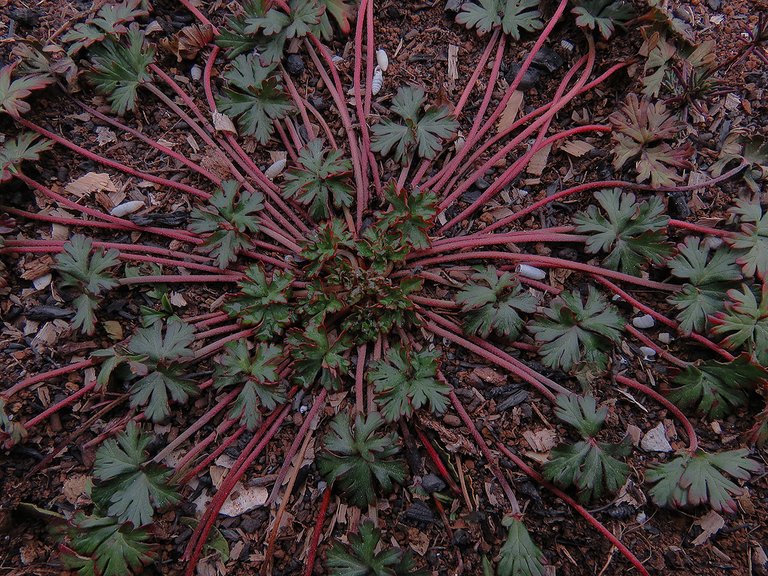
In this photograph, the Geranium columbinum leaves are green, but the pretty long stems are red, and that creates a beautiful radial pattern.
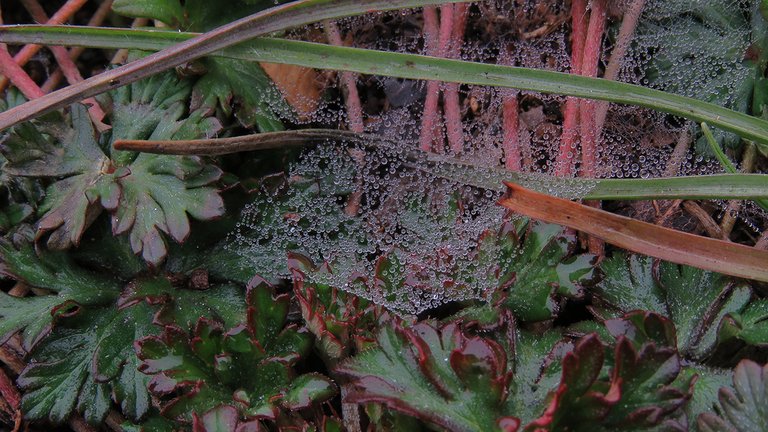
In the same area, just a meter or two further, always among the Geranium columbinum leaves, I found plenty of minuscule droplets on the horizontal web of a small spider from the Linyphiidae family. They would surely look like precious pearls through the macro lens, but I forgot that lens at home.
A bit later, I came across a considerably bigger piece of jewelry. This beautiful carcass was once a beetle. The Protaetia aeruginosa. A beetle from the Scarabaeidae family. The iridescent exoskeleton looked great in the subdued light of a cloudy day.
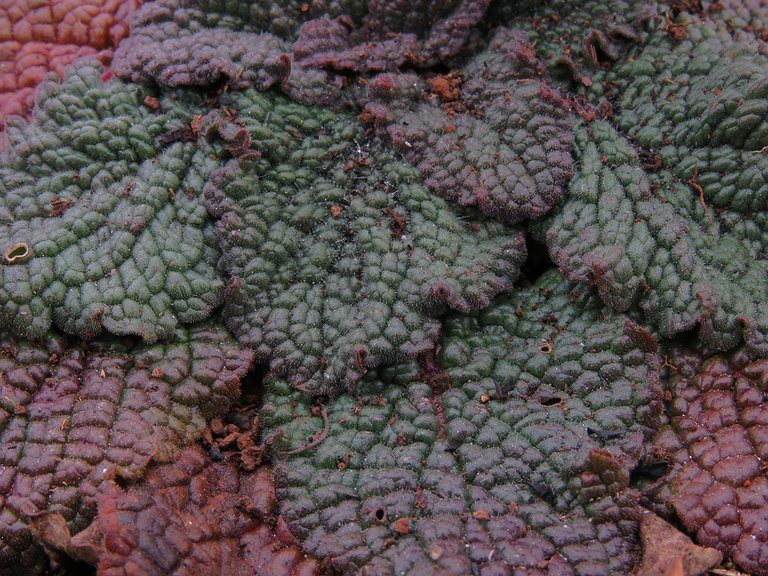
These wrinkled leaves ...
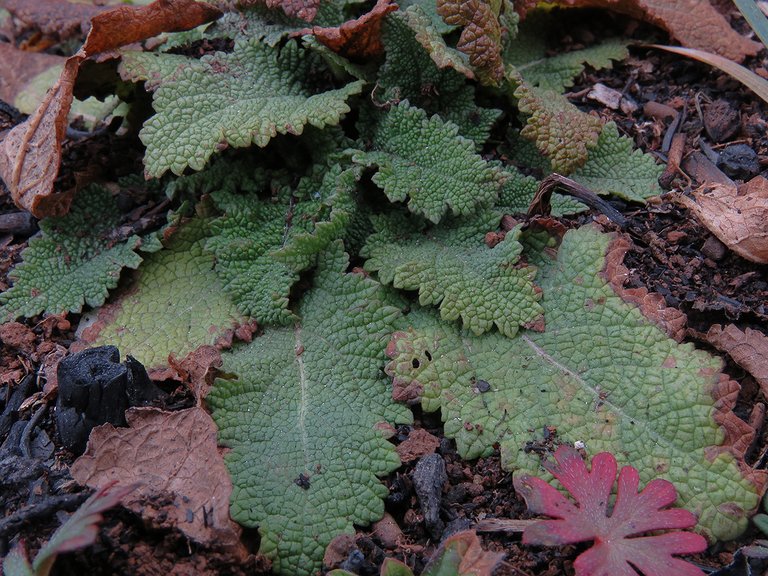
... belong to a sage. Salvia verbenaca is the name of this wild sage. Most leaves of these plants were ordinary green ...
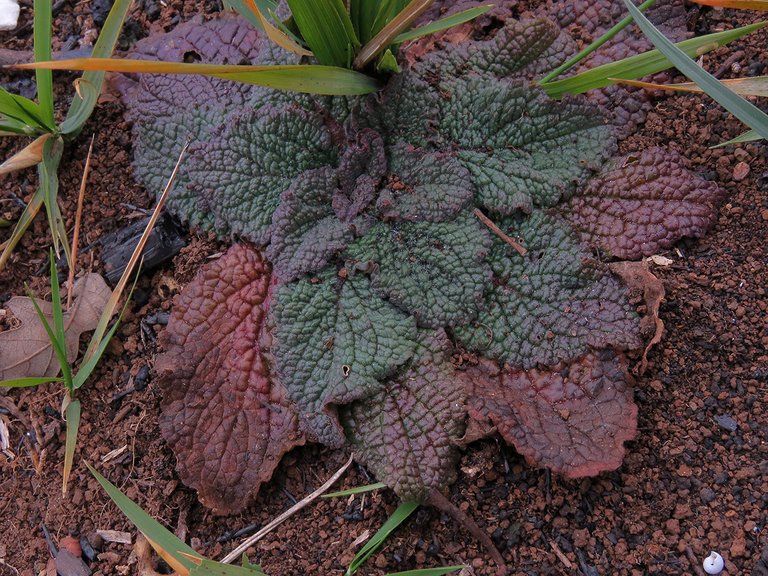
... but I did find a bunch of colorful, dark red, dark green, and violet Salvia verbenaca leaves on that gloomy winter day. In the following photograph ...
... you can take a break from these small details found down on the ground and take another look at the scenery along the stretch of the road between two small inland towns, Svetvinchenat and Vodnjan.
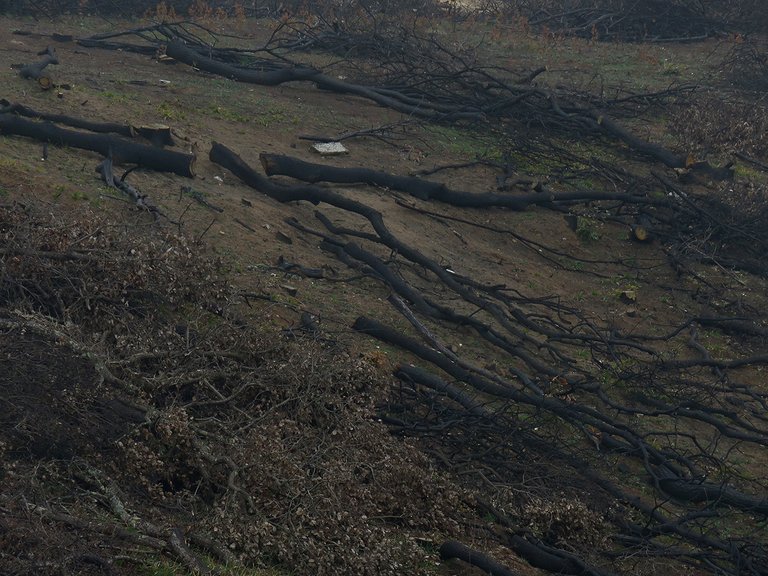
In some places, the cut-down trees were laying in pieces by the side of the road.

Here you can see a trio of small oak trees that have retained their original vertical position. On one of the stumps around them ...
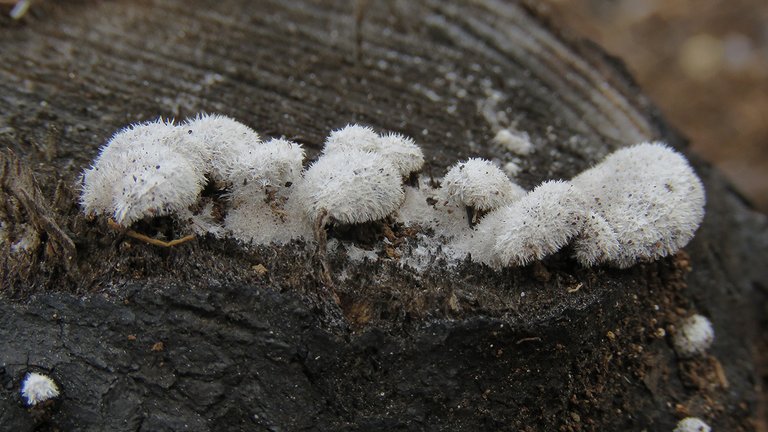
... I found a bunch of Schizophyllum commune mushrooms. These fruiting bodies are young and small.
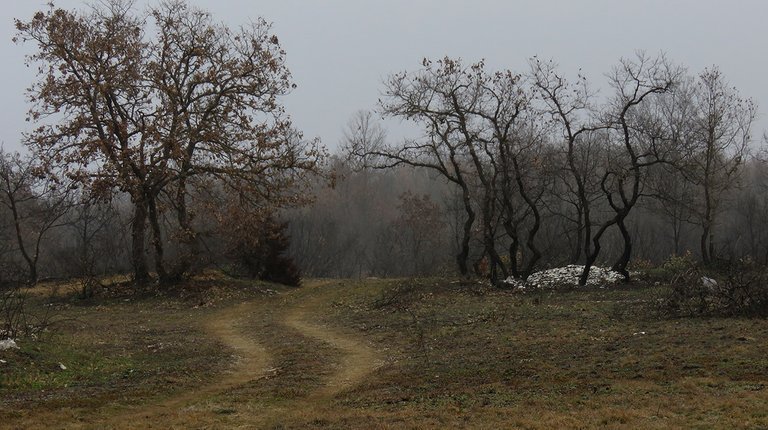
Here you can take another look at the scenery before I continue ...

... to explore the herbaceous plants, with my eyes and the lens of my camera glued to the ground.
Here you can see the beautiful and pretty thick leaves of some plants that I wasn't able to identify.
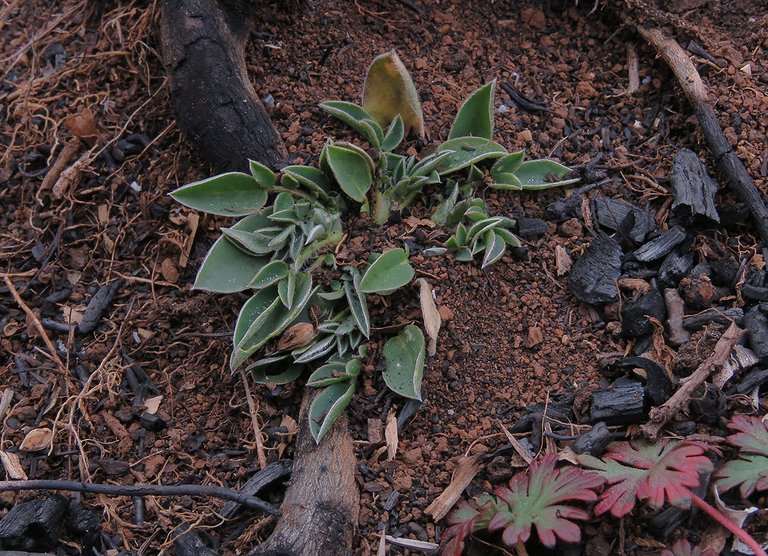
My Internet searches aren't always successful. Maybe one day, in one of the future posts, the same kind of plant will appear accompanied by its scientific name, but this time, the leaves shown in this and the previous five photographs, will remain a mystery.
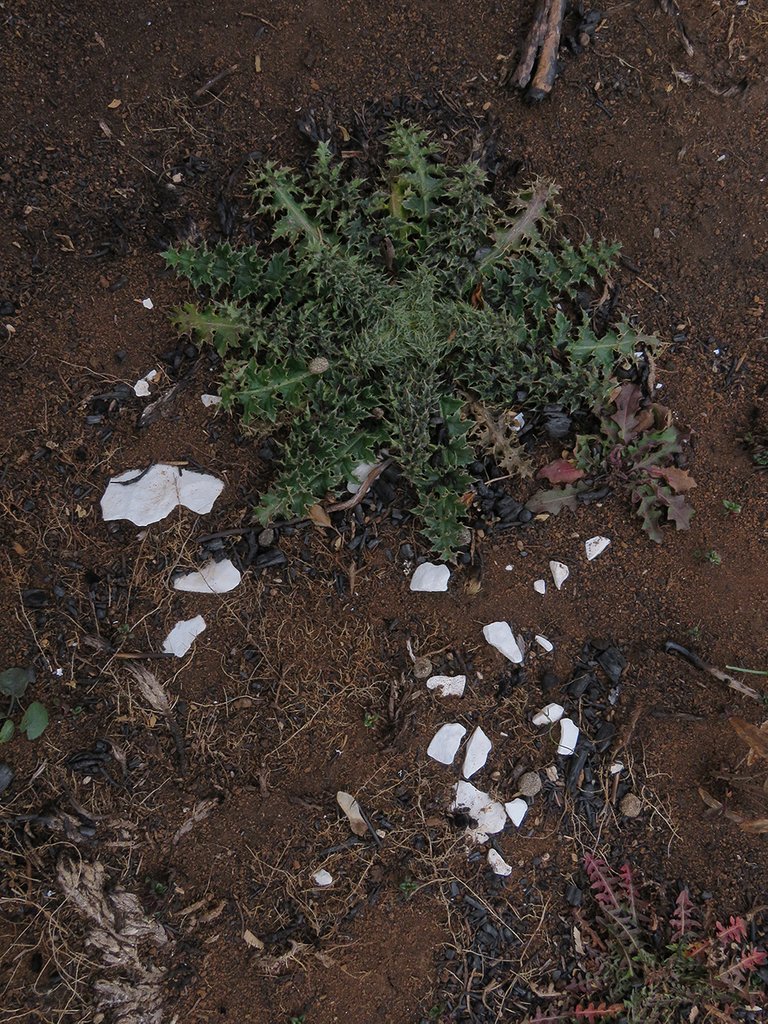
Here you can see the resilient thorny leaves of a thistle. Can't tell you what species is this only by looking at its leaves. A flower would be very helpful. Quite a few related species look practically the same at this early stage.
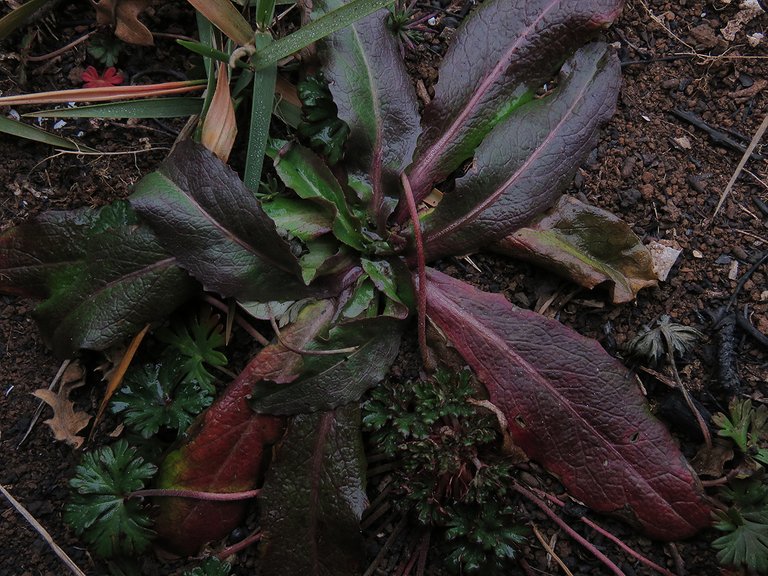
This salad-like mix of green and reddish leaves belongs to the Lactuca virosa plant.
Here you can see a mix made of Geranium columbinum and Eryngium campestre plants. Enlarging the picture by clicking on it is highly advised. That way you'll see all the details of this lovely herbal arrangement.
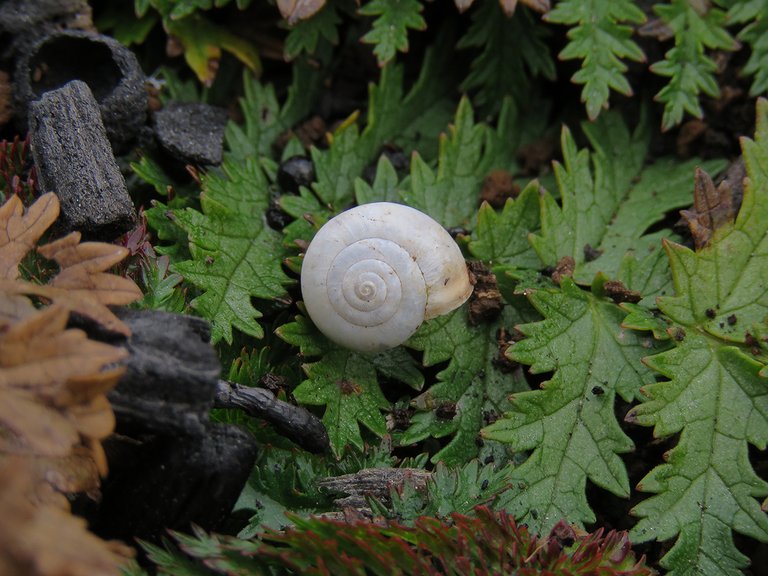
This empty little shell of the Theba pisana snail ...
... was found and photographed on the leaves of the Filipendula vulgaris plant.

Here you can see a nice mix of red and green leaves of the Erodium acaule plant.
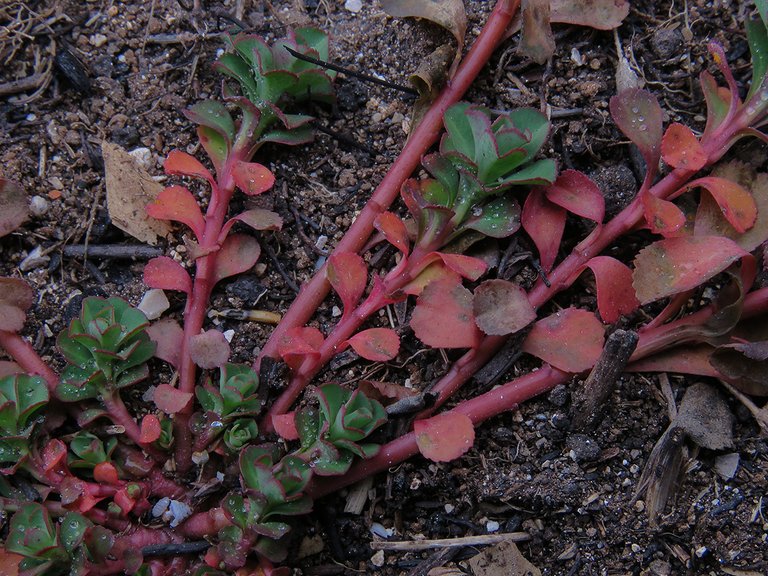
These lovely red leaves and stems mixed with a bit of green foliage ...
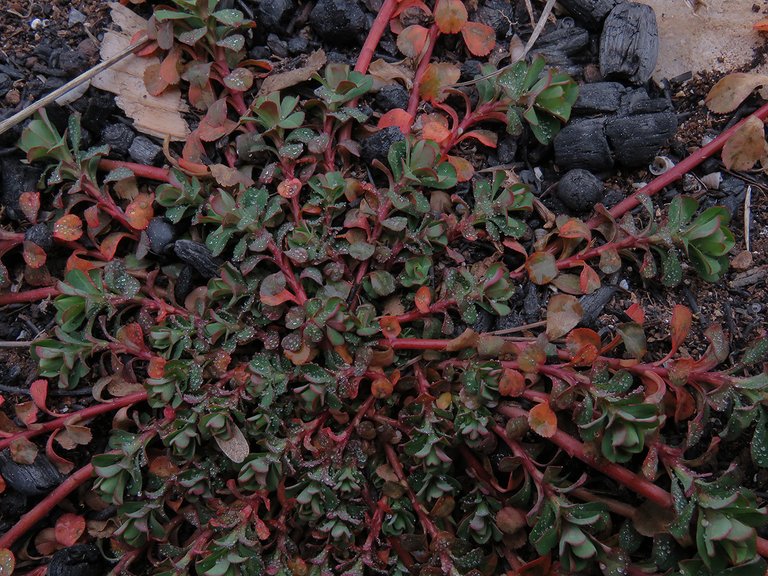
... belong to the Portulaca oleracea plant.
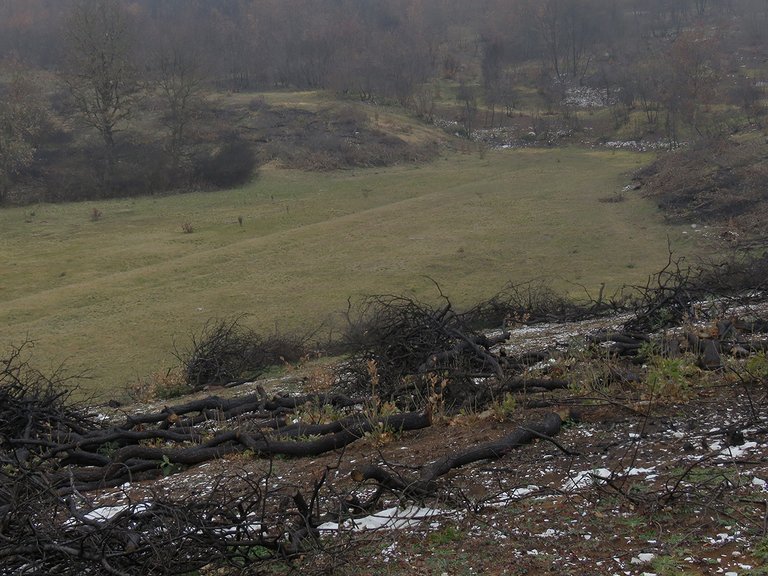
And that's it.
If you would like to see how this place looked on three different occasions, earlier after the fire, the following three links will take you back in time, to my old posts about the same area that was burned last summer.
https://ecency.com/hive-193212/@borjan/after-the-wildfire-two-months
https://ecency.com/hive-194913/@borjan/ten-days-later-after-the
https://ecency.com/hive-168869/@borjan/after-the-wildfire
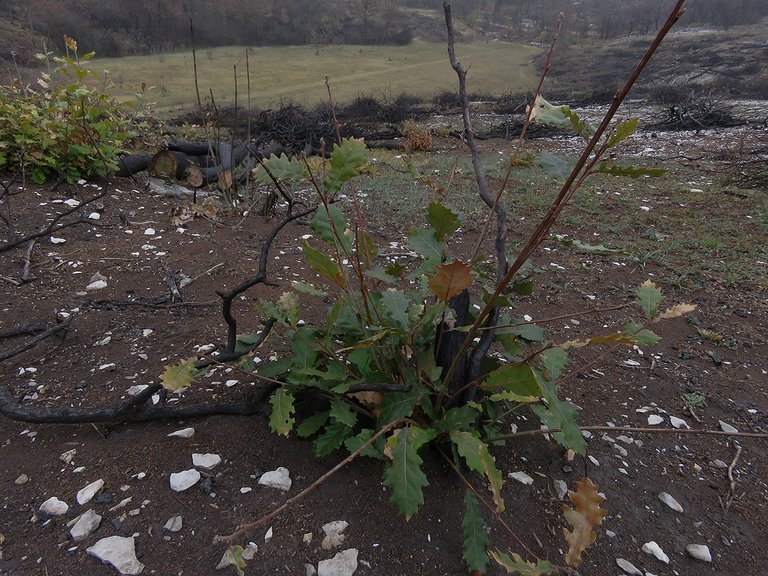
And now, in the end, I'll give you a few links to the sites with more information about some of the protagonists of this post. I found some stuff about them there.
https://en.wikipedia.org/wiki/Quercus_robur
https://en.wikipedia.org/wiki/Geranium_columbinum
https://en.wikipedia.org/wiki/Salvia_verbenaca
https://en.wikipedia.org/wiki/Schizophyllum_commune
https://en.wikipedia.org/wiki/Lactuca_virosa
https://en.wikipedia.org/wiki/Filipendula_vulgaris
https://en.wikipedia.org/wiki/Erodium_acaule
https://en.wikipedia.org/wiki/Portulaca_oleracea
AND THAT'S IT. AS ALWAYS HERE ON HIVE, THE PHOTOGRAPHS ARE MY WORK.
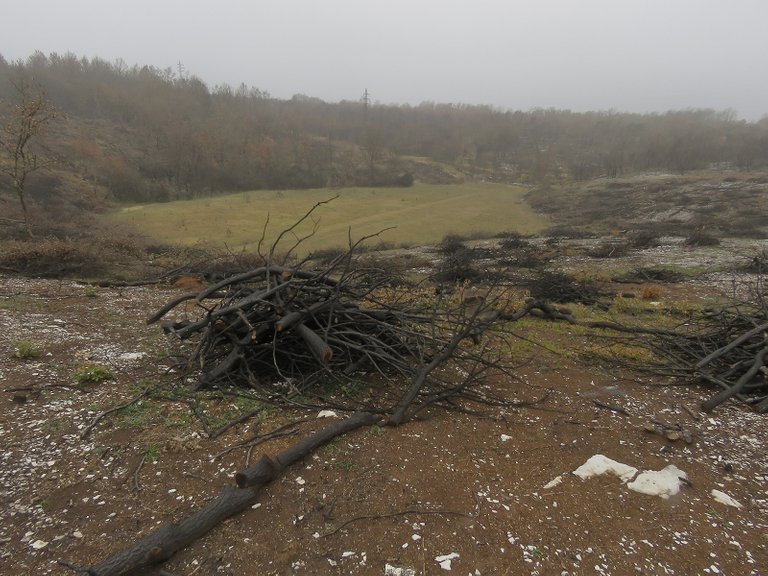
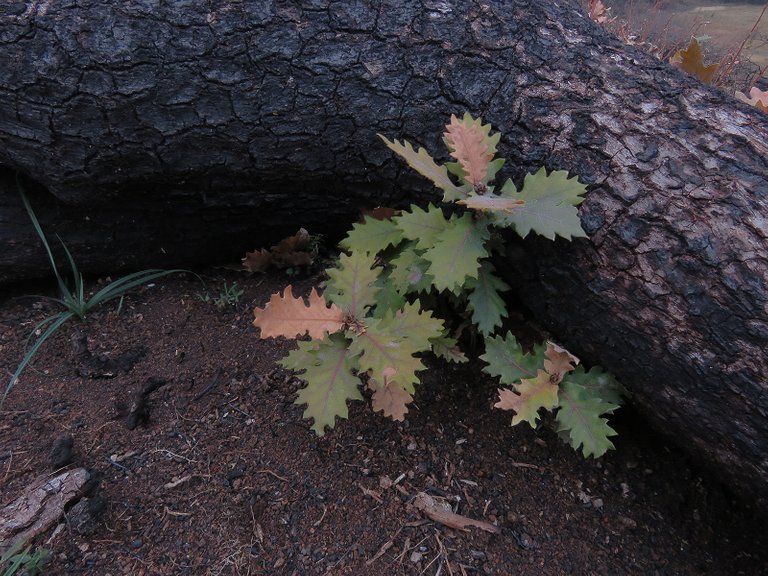
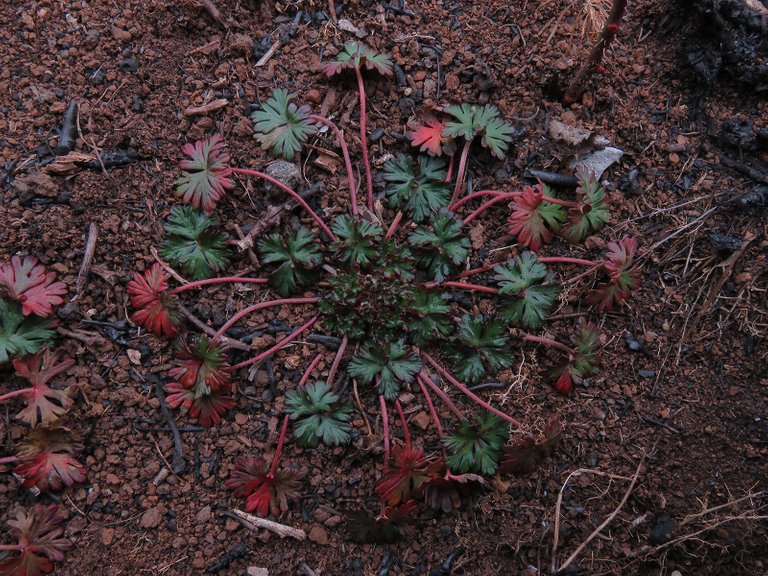

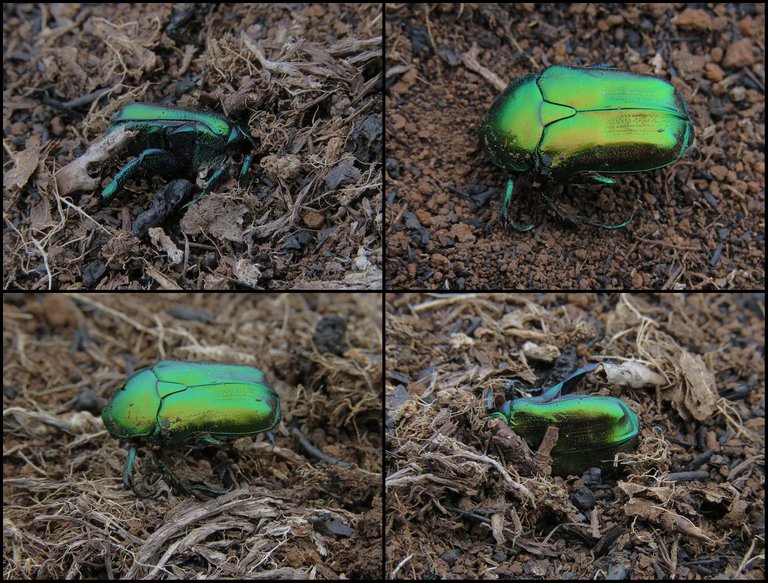
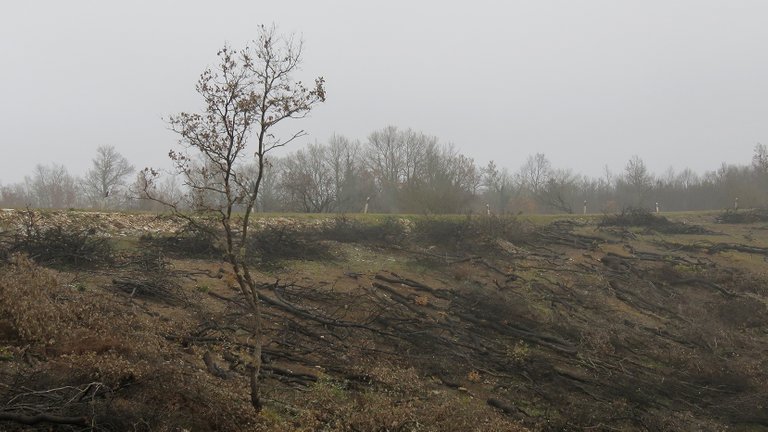
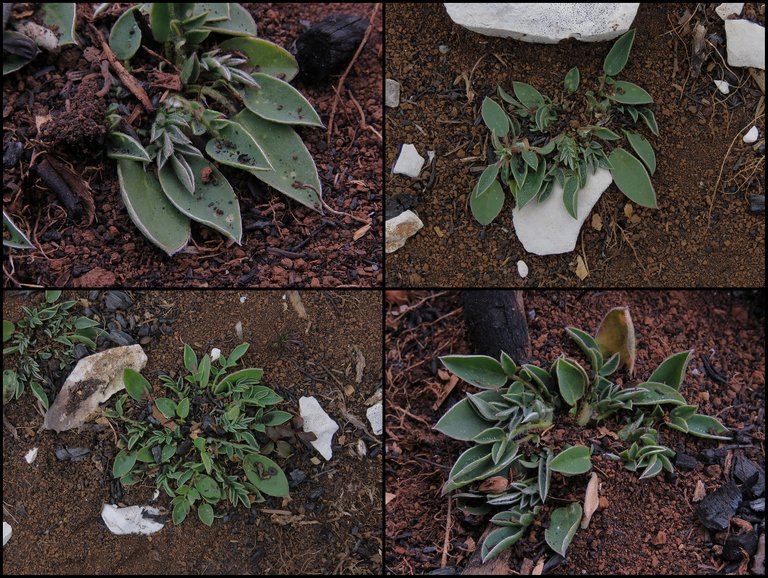
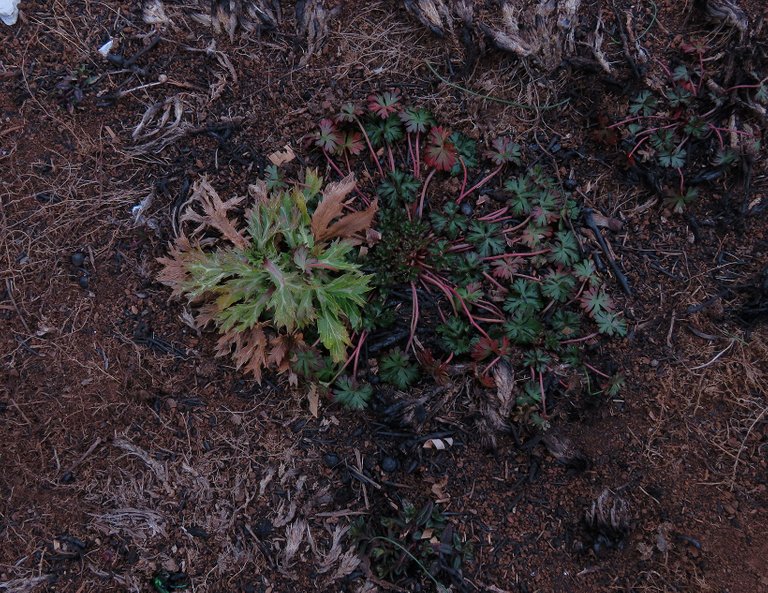
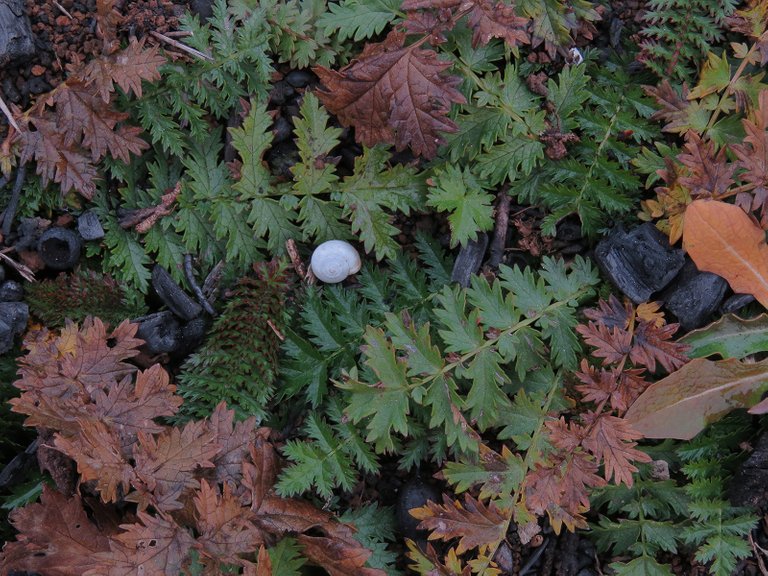

After any forest fire, it takes a lot of time to recover. And it may take a long time to return to its original state .Even a small spark in the forest works as a fire. It may take some time to fully recover. Indeed, these landscapes are very attractive, in their original state, they would have shown a very beautiful view of the valleys
Nature cannot be stopped by fire, as evidenced by your pictures.
It is a pity when the forest burns - a habitat for many animals and insects😢
Why the snail shell was resting there ? Is it common for snails to leave their snail shell ? by the way it is very hard to read Svetvinchenat
That snail died long ago. The snails don't leave their shells. If you find an empty one, the snail has died and dissolved. Yes, Svetvinchenat is a long and difficult name.
This is something new knowledge for me. I have never seen snail in my real life. Just some pictures on the internet.
Nice to see that the greenery is coming back, looks like it must have been a hot fire. That beetle is really pretty, I love metallic insects.
Hope you are well :)
A very large area of our local park was burned to the ground a couple of years ago. (Caused by kids lighting fires it is thought).
However, whenever I now walk past this same area all of the shrubs and grass have regrown to such a huge extent. You would never know what actually happened there.
Nature is truly amazing at gaining a full recovery!
!PIMP !PGM !LOLZ 😎
You must be killin' it out here!
@fun.farms just slapped you with 5.000 PIMP, @borjan.
You earned 5.000 PIMP for the strong hand.
They're getting a workout and slapped 2/2 possible people today.
Read about some PIMP Shit or Look for the PIMP District
BUY AND STAKE THE PGM TO SEND A LOT OF TOKENS!
The tokens that the command sends are: 0.1 PGM-0.1 LVL-0.1 THGAMING-0.05 DEC-15 SBT-1 STARBITS-[0.00000001 BTC (SWAP.BTC) only if you have 2500 PGM in stake or more ]
5000 PGM IN STAKE = 2x rewards!
Discord
Support the curation account @ pgm-curator with a delegation 10 HP - 50 HP - 100 HP - 500 HP - 1000 HP
Get potential votes from @ pgm-curator by paying in PGM, here is a guide
I'm a bot, if you want a hand ask @ zottone444
lolztoken.com
Because they're outstanding in their field.
Credit: reddit
@borjan, I sent you an $LOLZ on behalf of @fun.farms
(2/10)
Are You Ready for some $FUN? Learn about LOLZ's new FUN tribe!
Yay! 🤗
Your content has been boosted with Ecency Points, by @borjan.
Use Ecency daily to boost your growth on platform!
Support Ecency
Vote for new Proposal
Delegate HP and earn more
Forests that have been burnt out are usually very fertile, so the new vegetation looks very good
At first, I found this forest scary, but after going through some of the pictures, I really liked it, I saw that red plant for the first time and it was nice to see that there are plants like this. Apart from this, there are many other things which are surprising to see that these are also exists in the world.
When there is a fire in a forest etc. or in such a place, all these flowers are destroyed and the beauty of the place is also completely lost. It will start. Trio tress looks so beautiful and amazing. I really like your photography. Thanks for sharing.
Nice location photography sir @borjan
Thanks for your contribution to the STEMsocial community. Feel free to join us on discord to get to know the rest of us!
Please consider delegating to the @stemsocial account (85% of the curation rewards are returned).
You may also include @stemsocial as a beneficiary of the rewards of this post to get a stronger support.
It looks a lot like the country side that was fought in the first world war.
Creepy and eerie but some of the plants are actually very beautiful!. It looks like a wet place though👌
!BEER
It's nice to see nature reclaiming lands even after such a tragedy.
The forest would be way better I assume 😃
Loved the spiderweb and the beetle skeleton. Fascinating how the plants are the 3 colors.
Congratulations, your post has been upvoted by @dsc-r2cornell, which is the curating account for @R2cornell's Discord Community.